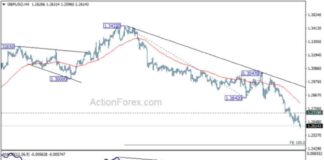China’s manufacturing sector experienced a slight decline in August, with the official Purchasing Managers’ Index (PMI) falling below expectations. According to the National Bureau of Statistics (NBS), the August Manufacturing PMI came in at 49.1, lower than the expected 49.5 and the previous month’s 49.4. This decrease indicates a slowdown in the manufacturing activity in China, reflecting challenges such as manufacturing overcapacity in certain sectors and subdued consumer demand.
On the other hand, the services sector in China held steady in August, with a PMI of 50.3, in line with expectations and slightly higher than the previous month’s 50.2. This resilience in the services sector is a positive sign for the Chinese economy, as it indicates that the services industry continues to grow despite challenges faced by the manufacturing sector.
The composite PMI for August, which combines both manufacturing and services data, stood at 50.1, slightly lower than the previous month’s 50.2. This indicates that overall economic activity in China remained relatively stable in August, despite the challenges faced by the manufacturing sector.
The Chinese economy has been undergoing a patchy and uneven recovery, with several key trouble spots identified by experts. One such challenge is the uncertain outlook for the property sector, which is currently burdened by high levels of debt. Additionally, subdued consumer confidence and demand have been affecting overall economic growth in China.
Moreover, the issue of manufacturing overcapacity in certain sectors continues to pose a challenge for the Chinese economy. This overcapacity has led to lower prices and reduced profitability for manufacturers, impacting their ability to invest in new technologies and innovation.
Another concern for the Chinese economy is the below-target underlying inflation, which is partly attributed to weak domestic demand and supply overcapacity. This low inflation rate has implications for the overall health of the economy, as it can lead to lower consumer spending and investment.
Looking ahead, there is the potential for higher tariffs on Chinese exports, which could further impact the country’s economic growth. To address these challenges, Chinese authorities have been providing targeted support to the economy in a piecemeal fashion. However, there is still much work to be done to ensure a sustainable and balanced recovery.
China has two primary PMI surveys – the official PMI released by the National Bureau of Statistics (NBS) and the Caixin China PMI published by Caixin and Markit / S&P Global. The official PMI survey covers large and state-owned companies, while the Caixin PMI survey focuses on small and medium-sized enterprises. The Caixin PMI is considered a more reliable indicator of the performance of China’s private sector, as it provides a broader sample of companies.
Despite the differences in methodology and coverage between the two surveys, they often provide similar readings on China’s manufacturing sector. The Caixin manufacturing PMI is set to be released on Monday, followed by the services PMI on Wednesday. These surveys will provide further insights into the performance of the Chinese economy and its key sectors.
In conclusion, the latest PMI data from China highlights the challenges and opportunities facing the country’s economy. While the manufacturing sector experienced a slight decline in August, the services sector remained resilient. Addressing issues such as manufacturing overcapacity, subdued consumer demand, and low inflation will be crucial for sustaining economic growth in China. By providing targeted support and implementing necessary reforms, Chinese authorities can work towards a more balanced and sustainable recovery.

















